The making of Realms of the Haunting: "By the end I was completing the game in two hours and 30 minutes"
Tales from the Retro Crypt – Chapter Three
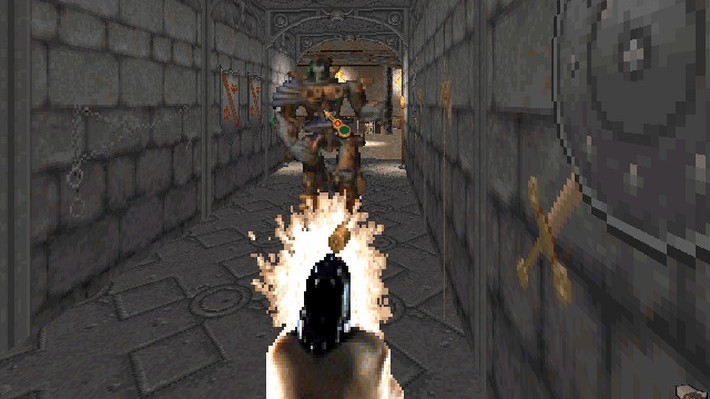
In the winter of 1996, publisher Gremlin Interactive unleashed an action-horror classic onto an unsuspecting gaming public. Cowering in a corner is Retro Gamer as we talk to producer Paul Green about the ideas and development that spawned this battle between good and evil…
"I started at Gremlin as a game designer although I also did a fair amount of work as an artist," begins Paul, boasting the same Romero-esque flowing locks of fifteen years ago, "and we were always open to game pitches. One day Tony Crowther approached us with a cool game engine and an idea – a horror-themed game."
Crowther was well known to Gremlin founder Ian Stewart as they had worked together during the company's 8-bit phase over ten years earlier; Gremlin liked what the veteran programmer had to say and Paul was soon on board as well. "The original idea of a horror game was Tony's," he explains, "while I conjured up the setting, mythology, characters and plot."
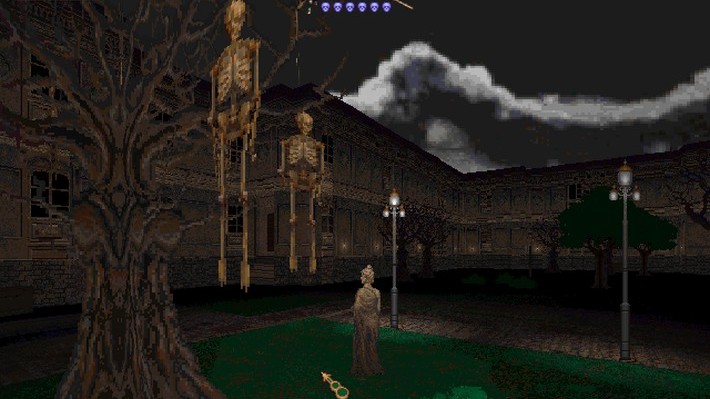
Despite its obvious roots in the FPS genre, Gremlin were keen to expand on the template laid down by the success of Doom. Fortunately, Tony Crowther had a plan, with Paul recalling his idea that "a combination of two popular genres – FPS and point-and-click – would work very well together".
What's more, in addition to the main game, the production team were enthusiastically working on another, oft-maligned addition that Gremlin considered key to generating the right atmosphere in Realms of the Haunting: full-motion video.
"A tremendous amount of effort went into the cut-scenes," says Paul proudly, "and we hired a company, Bright Light Studios, to do the shooting, prosthetics, make-up, props and costumes." Director Alan Coltman oversaw the production, most of which was filmed in front of blue screens. "We felt it was vital to developing the plot," continues Paul, "and Alan worked very closely with the actors and Bright Light to make sure we got what he wanted. He did a first class job."
Horror stories
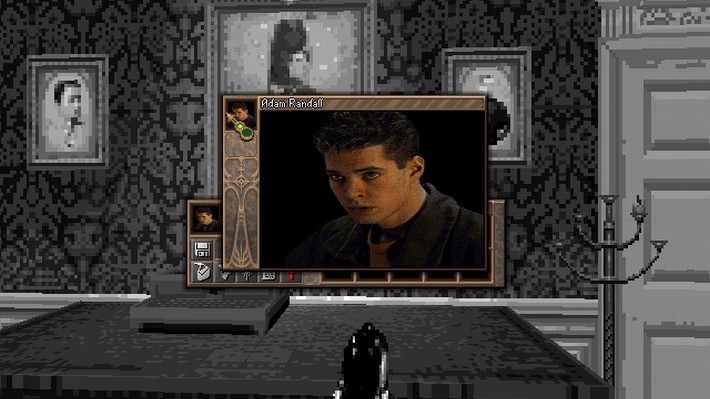
With so much video planned, it was an essential part of Realms' development. Coltman was also responsible for editing the footage back at Gremlin, where together with the creation and digital composition of the background scenes, numerous sound effects and the moody score were added. It was clear Realms of the Haunting was a game of considerable scope. "The art and programming team knew Realms was a big project right from the start," verifies Paul, "but when the other departments began to see the final composites of the cut-scenes, everyone knew just how big a deal it was."
Sign up to the GamesRadar+ Newsletter
Weekly digests, tales from the communities you love, and more
We run screaming back to the start of development now and quiz Paul further on his inspiration for the intricate background and storyline to Realms. Surprisingly the game's plot and ambience took its cue from different influences, as he explains. "Firstly, I was an avid table-top RPG player and from my early teens played games such as Call Of Cthulhu and Runequest. I love creating worlds and all the stuff that makes them work, so this experience was helpful."
Although Paul mentions Cthulhu, the works of HP Lovecraft were apparently not an influence in themselves. "I'm obviously familiar with his work and the games that have spawned from it, yet the inspiration for Realms came from religion, both orthodox and unorthodox, and the theories that go with them."
Consequently, Paul built a story using mainly Hebrew texts on the realms of Heaven, Earth and Hell and the roles of angels and demons. Soon he was creating a workable mythology based on these ancient writings as well as other sources such as the book The Holy Blood And The Holy Grail, upon which Dan Brown based his 2003 bestseller, The Da Vinci Code. For the sombre, oppressive mood of the game, Paul recalled some cinematic favourites. "One film in particular was more inspirational than others: The Keep. I just loved the creeping sense of doom and horror it created. Another was John Carpenter's The Thing, which you can clearly see in the title sequence to the game."
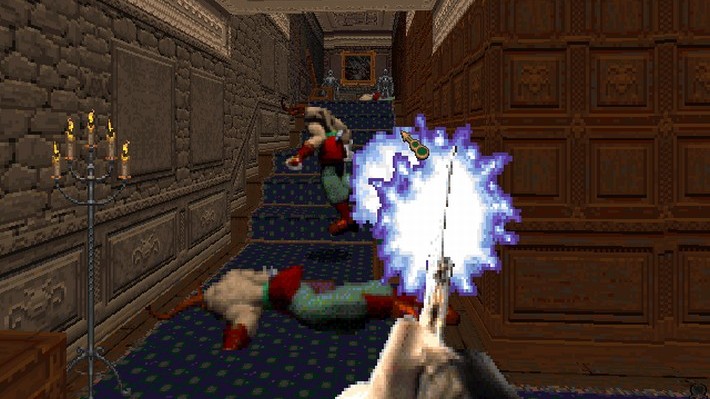
"It belonged to all of us and everyone that worked on it was instrumental to its success"
Paul Green
With a technical design in place from Tony Crowther, plot, background and characters from Paul, and the FMV lensing with Alan Coltman at the helm, Realms of the Haunting was moving along at a demonic pace. Surely there were complications?
"Tony was and still is an ace programmer," beams Paul, "and there were many days when he would shrug and say to us that something couldn't be done or that it would take too long. Then, the next day he'd come back with it coded or fixed, and quite often – better."
As a result, the development of Realms ran relatively smoothly, despite some harsh cuts required for the film footage. "An hour or so needed to be cut because of time, cost and memory restrictions. We had to keep the number of discs and therefore the costs down."
With the game nearing completion, Paul became responsible for playtesting not only the puzzles and gameplay but also ensuring that the mood and feel was fittingly lugubrious. "By the end I was completing the game in two hours and 30 minutes," he laughs, "and I'd be delighted to know if anyone has beaten that!"
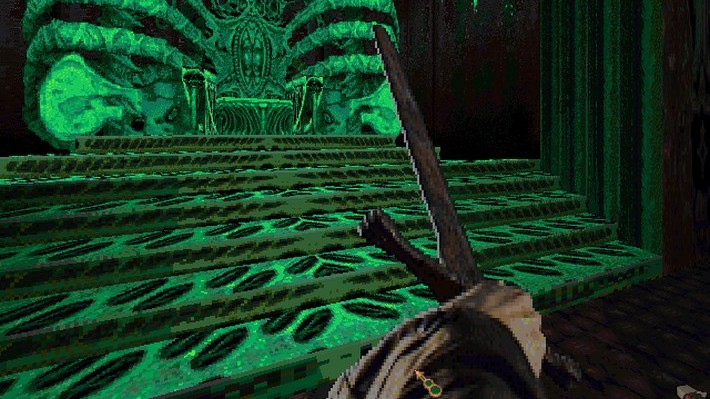
Despite a late change to its denouement, Realms of the Haunting was released on time at the end of 1996 in the UK and early 1997 in the US. Reviews were positive; GameSpot awarded it 8.5 out of 10, praising the professional FMV sections and handy difficulty slider, whilst PC Zone bestowed Realms an impressive 93%, calling it "…an absorbing experience from start to finish."
Long before the final scene of Realms of the Haunting had been shot, Paul was already working on its sequel. Unfortunately, disappointing sales saw this possibility fade.
"That was sad for everyone that worked on Realms," he says gloomily, "especially as the critics loved it and that the people who actually did buy it loved it too." Yet, despite the less-than-stellar public interest, Paul still looks back very fondly on Realms of the Haunting. "We all had a great time on the game. It belonged to all of us and everyone that worked on it was instrumental to its success. I feel honoured to have been part of that team."
This feature first ran in Retro Gamer 108. You can subscribe to Retro Gamer Magazine here and get more features just like this one delivered straight to your doorstep.
Retro Gamer is the world's biggest - and longest-running - magazine dedicated to classic games, from ZX Spectrum, to NES and PlayStation. Relaunched in 2005, Retro Gamer has become respected within the industry as the authoritative word on classic gaming, thanks to its passionate and knowledgeable writers, with in-depth interviews of numerous acclaimed veterans, including Shigeru Miyamoto, Yu Suzuki, Peter Molyneux and Trip Hawkins.



